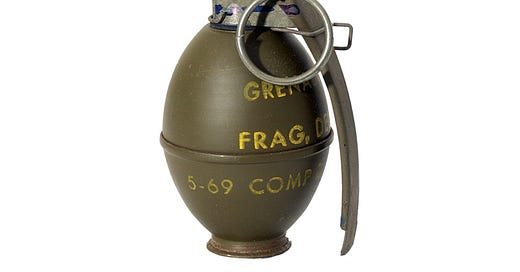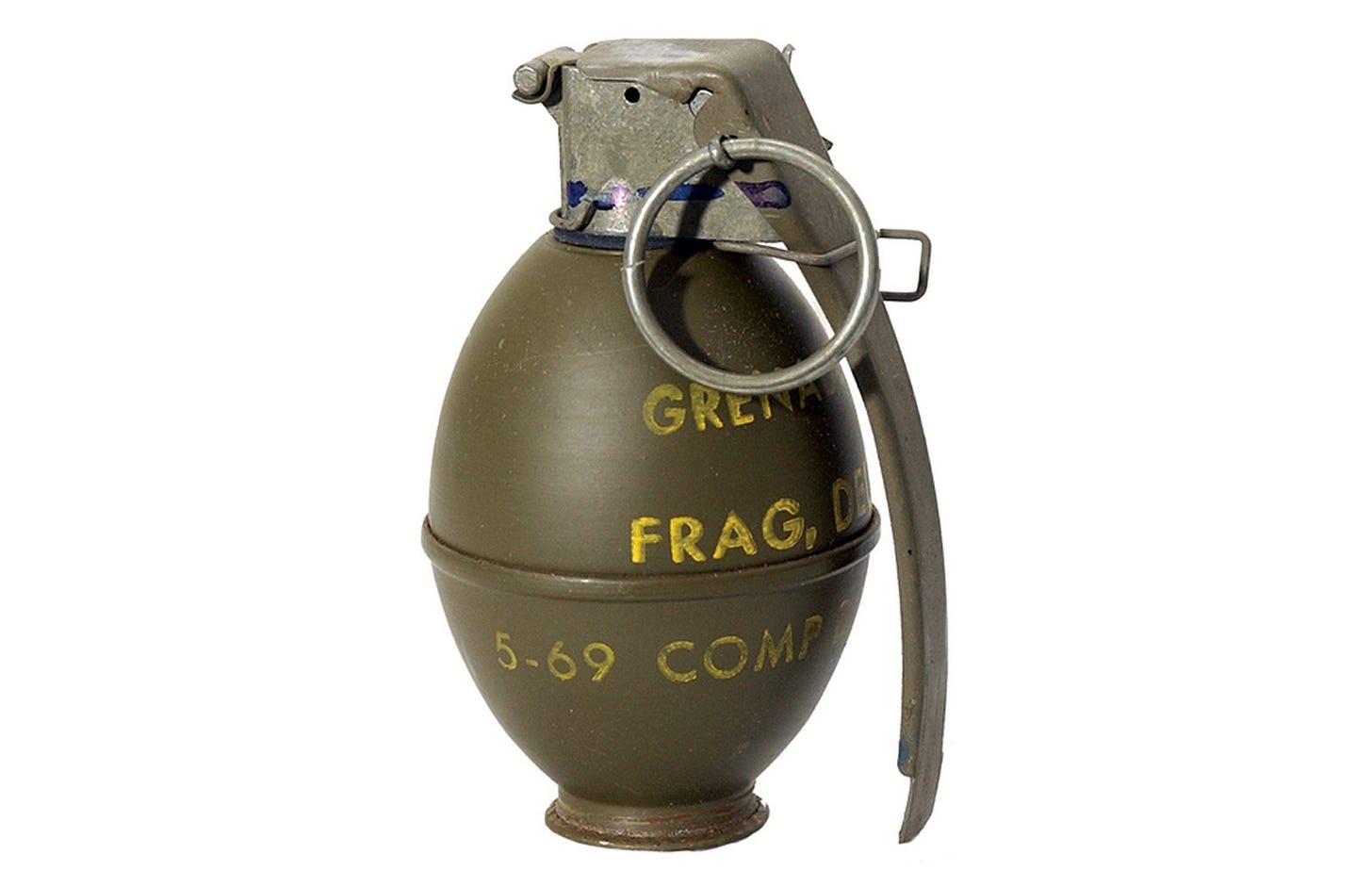I appreciate your interest! If you’d like to support Bullfish Hole you can leave a tip of any size at this Stripe link. You can also become a free or paid subscriber at the link below. If you don’t have time to read, this post now has an audio version for paid subscribers.
“Fragging” is a term that U.S. soldiers in Vietnam used to refer to the assassination of a superior officer via a fragmentation grenade. Grenades were preferred because they allowed covert attack. A common method was for the perpetrator to sneak up to the officer’s tent and roll a live grenade into it before making his escape. Unless he was spotted by someone, there was little chance of identifying the culprit.
Amazingly, there were around 900 confirmed or suspected fraggins during the war, against about 58,000 total deaths among US forces.
George Lepre’s Fragging: Why U.S. Soldiers Assaulted Their Officers in Vietnam addresses what sort of conflicts provoked fragging and what made it especially common during this conflict.
The popular image of fragging is that it was a matter of self-preservation. Soldiers, unwilling to lay down their lives for an unpopular war with uncertain aims, were willing to eliminate officers who would expose them to unnecessary risk. Thus they used fragging to rid themselves of officers who were too gung-ho and eager for combat, or perhaps who were just dangerously incompetent.
But the picture Lepre paints is quite different. While there were some cases that resembled the popular image, the majority of confirmed fraggings stemmed from more prosaic interpersonal conflicts. Usually fraggers were angry about acts of discipline directed at them personally.
Sometimes these sanctions were fairly severe, unusual by the standards of military discipline. For example, one soldier with an otherwise outstanding record killed a superior who, as even fellow officers testified, singled him out for special surveillance and restriction. The officer even attempted to regulate the soldier’s private life, disapproving of the soldier’s Vietnamese wife and going out of his way to keep the soldier from visiting her. This soldier resorted to fragging only after unsuccessful attempts to appeal to other superiors for help with the conflict.
In other cases, though, fragging resulted from completely routine discipline: getting chewed out, busted down, or given punishment duties like cleaning latrines. And in some cases the offense that triggered the fragging was something most outsiders would see as completely trivial: One officer was killed for making a soldier cut his hair, while another got fragged for not handing out a large enough ration of cigarettes (Lepre, p.99).
It may sound bizarre that a soldier would blow someone up with a grenade for such small matters. But it’s not so different from patterns of criminal homicide in civilian life.
Way back in 1958, criminologist Marvin Wolfgang reported the patterns he found in 625 homicide cases in Philadelphia. One of his major conclusions was that the typical homicide stemmed from he called “trivial” altercations. Killing was the end result of a conflict that started when one guy looked too long at another in a bar (“hey buddy, what you staring at?”), or overheard someone saying his sister was an easy lay, or took the last beer out of the fridge without asking. Subsequent studies of homicide find much the same. A man in Houston kills an acquaintance who took a French fry off his plate after he told him to stop, a guy in Detroit kills someone for insulting him in front of others. To those unfamiliar with either modern street toughs or old-fashioned notions of honor, such incidents are shocking. But the sort of people most prone to resort to lethal violence tend to do so over what many of us would see as minor matters. To them, though, the heart of the matter is usually an unwillingness to tolerate disrespect.




